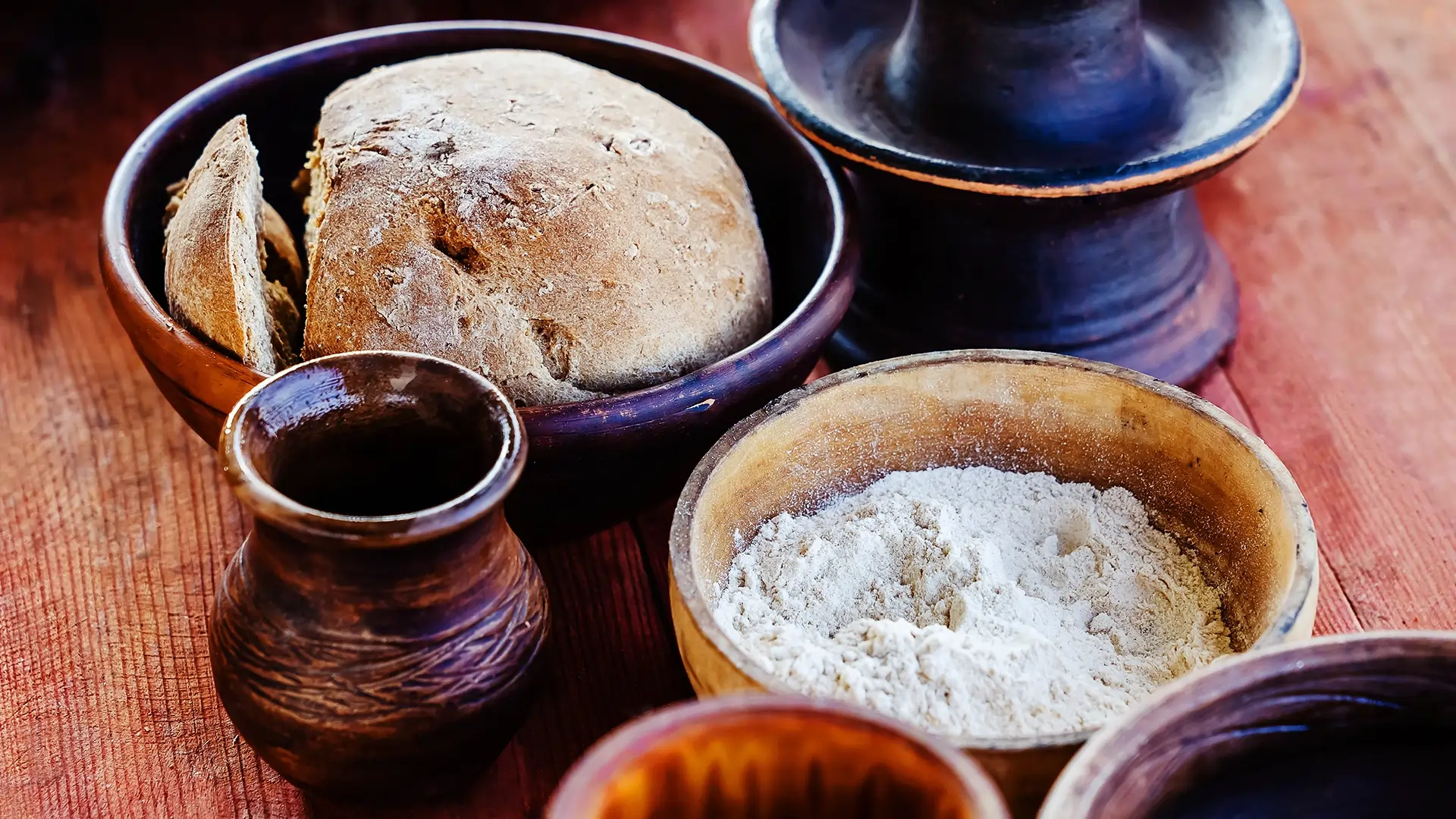Bread through the Ages
Bread, a staple food in nearly every culture, has a history that stretches back thousands of years. More than just sustenance, bread has been a symbol of life, a form of currency, and a marker of social status. From ancient Egypt to modern times, bread has played a crucial role in shaping societies.
Bread in Ancient Egypt: A Sacred Staple
In ancient Egypt, bread was the foundation of life. Egyptians depended heavily on bread and beer, which were central to their diet. So vital was bread that it served as a form of currency. Workers, including those who built the pyramids, were often paid in bread and beer, underlining its economic importance. Bread was also spiritually significant, frequently placed in the tombs of the dead to sustain them in the afterlife, symbolising sustenance and eternal life.


Bread in Ancient Greece and Rome: A Social Divider
In ancient Greece and Rome, bread symbolised social status. The type of bread one ate indicated one’s place in society. The wealthy enjoyed fine, white bread made from wheat, while the poorer classes consumed coarse, dark bread made from barley or other grains. This distinction in bread types served as a daily reminder of the social hierarchy. In Rome, bread distribution was closely tied to politics, with emperors using it to maintain public order. The famous “bread and circuses” policy aimed to appease the masses by providing free grain and entertainment, ensuring loyalty and preventing unrest.
Mediaeval Europe: Bread as Power and Currency
In mediaeval Europe, bread evolved from a symbol of status to a tool of economic power. In France, for example, bread became a form of currency and credit. Bakers held significant influence, often lending bread on credit to those in need, effectively controlling a crucial part of the local economy. This gave them considerable power, as bread was not only a staple food but also a vital commodity. Bread shortages could lead to riots, and bakers were sometimes held responsible for the well-being of entire communities.


Hovis®: A Bread Legacy
In the 19th century, the story of bread took on a new chapter with the rise of Hovis® (that’s us!). Founded in 1886 by Richard ‘Stoney’ Smith and S. Fitton & Sons Ltd developed the brand, milling the flour and selling it along with Hovis-branded baking tins to other bakers. The name "Hovis®" is derived from the Latin word "hominis vis" (meaning "strength of man"), reflecting our commitment to providing delicious bread for all.
Our commitment to quality has continued throughout the 20th and 21st centuries, evolving with changing tastes while maintaining our heritage. We’ve been associated with iconic advertising campaigns, including the famous "Hovis boy on a bike" advert, which celebrated the brand’s historical roots and continued relevance. Today, we remain a symbol of tradition and innovation in bread-making, embodying the enduring legacy of bread as both a staple and a cultural icon.
Conclusion: Bread’s Enduring Legacy
Throughout history, bread has been more than just a food - it has been currency, a symbol of power, and a cultural icon. Its journey from the sacred loaves of ancient Egypt to the iconic Hovis® bread of today reflects the evolution of human societies and economies. As both a humble staple and a symbol of heritage, bread continues to be a part of everyday life, connecting us to the past and future.
Related Blogs

The Power of Fibre: Why It Matters and How Bread Can Help
In the quest for a healthier lifestyle, one crucial element often overlooked is fibre.

Why Hovis® Bread is Perfect for Vegans and Vegetarians
Which Hovis® Breads are Vegan and Vegetarian friendly? Read to find out! (Spoiler: It’s most of them!)

The Origin of Picnics and Some Great Picnic Sandwiches
Discover the history of picnics and get your own picnic sandwich inspiration in this article.